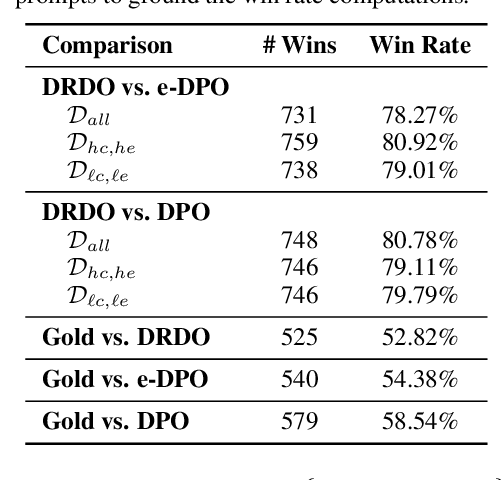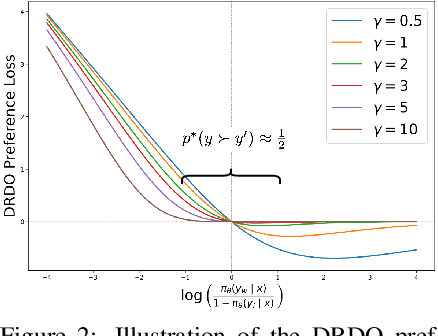Abhijnan Nath
Any Other Thoughts, Hedgehog? Linking Deliberation Chains in Collaborative Dialogues
Oct 25, 2024Abstract:Question-asking in collaborative dialogue has long been established as key to knowledge construction, both in internal and collaborative problem solving. In this work, we examine probing questions in collaborative dialogues: questions that explicitly elicit responses from the speaker's interlocutors. Specifically, we focus on modeling the causal relations that lead directly from utterances earlier in the dialogue to the emergence of the probing question. We model these relations using a novel graph-based framework of deliberation chains, and reframe the problem of constructing such chains as a coreference-style clustering problem. Our framework jointly models probing and causal utterances and the links between them, and we evaluate on two challenging collaborative task datasets: the Weights Task and DeliData. Our results demonstrate the effectiveness of our theoretically-grounded approach compared to both baselines and stronger coreference approaches, and establish a standard of performance in this novel task.
Simultaneous Reward Distillation and Preference Learning: Get You a Language Model Who Can Do Both
Oct 11, 2024



Abstract:Reward modeling of human preferences is one of the cornerstones of building usable generative large language models (LLMs). While traditional RLHF-based alignment methods explicitly maximize the expected rewards from a separate reward model, more recent supervised alignment methods like Direct Preference Optimization (DPO) circumvent this phase to avoid problems including model drift and reward overfitting. Although popular due to its simplicity, DPO and similar direct alignment methods can still lead to degenerate policies, and rely heavily on the Bradley-Terry-based preference formulation to model reward differences between pairs of candidate outputs. This formulation is challenged by non-deterministic or noisy preference labels, for example human scoring of two candidate outputs is of low confidence. In this paper, we introduce DRDO (Direct Reward Distillation and policy-Optimization), a supervised knowledge distillation-based preference alignment method that simultaneously models rewards and preferences to avoid such degeneracy. DRDO directly mimics rewards assigned by an oracle while learning human preferences from a novel preference likelihood formulation. Our experimental results on the Ultrafeedback and TL;DR datasets demonstrate that policies trained using DRDO surpass previous methods such as DPO and e-DPO in terms of expected rewards and are more robust, on average, to noisy preference signals as well as out-of-distribution (OOD) settings.
Multimodal Cross-Document Event Coreference Resolution Using Linear Semantic Transfer and Mixed-Modality Ensembles
Apr 13, 2024



Abstract:Event coreference resolution (ECR) is the task of determining whether distinct mentions of events within a multi-document corpus are actually linked to the same underlying occurrence. Images of the events can help facilitate resolution when language is ambiguous. Here, we propose a multimodal cross-document event coreference resolution method that integrates visual and textual cues with a simple linear map between vision and language models. As existing ECR benchmark datasets rarely provide images for all event mentions, we augment the popular ECB+ dataset with event-centric images scraped from the internet and generated using image diffusion models. We establish three methods that incorporate images and text for coreference: 1) a standard fused model with finetuning, 2) a novel linear mapping method without finetuning and 3) an ensembling approach based on splitting mention pairs by semantic and discourse-level difficulty. We evaluate on 2 datasets: the augmented ECB+, and AIDA Phase 1. Our ensemble systems using cross-modal linear mapping establish an upper limit (91.9 CoNLL F1) on ECB+ ECR performance given the preprocessing assumptions used, and establish a novel baseline on AIDA Phase 1. Our results demonstrate the utility of multimodal information in ECR for certain challenging coreference problems, and highlight a need for more multimodal resources in the coreference resolution space.
Okay, Let's Do This! Modeling Event Coreference with Generated Rationales and Knowledge Distillation
Apr 04, 2024



Abstract:In NLP, Event Coreference Resolution (ECR) is the task of connecting event clusters that refer to the same underlying real-life event, usually via neural systems. In this work, we investigate using abductive free-text rationales (FTRs) generated by modern autoregressive LLMs as distant supervision of smaller student models for cross-document coreference (CDCR) of events. We implement novel rationale-oriented event clustering and knowledge distillation methods for event coreference scoring that leverage enriched information from the FTRs for improved CDCR without additional annotation or expensive document clustering. Our model using coreference specific knowledge distillation achieves SOTA B3 F1 on the ECB+ and GVC corpora and we establish a new baseline on the AIDA Phase 1 corpus. Our code can be found at https://github.com/csu-signal/llama_cdcr
How Good is the Model in Model-in-the-loop Event Coreference Resolution Annotation?
Jun 06, 2023Abstract:Annotating cross-document event coreference links is a time-consuming and cognitively demanding task that can compromise annotation quality and efficiency. To address this, we propose a model-in-the-loop annotation approach for event coreference resolution, where a machine learning model suggests likely corefering event pairs only. We evaluate the effectiveness of this approach by first simulating the annotation process and then, using a novel annotator-centric Recall-Annotation effort trade-off metric, we compare the results of various underlying models and datasets. We finally present a method for obtaining 97\% recall while substantially reducing the workload required by a fully manual annotation process. Code and data can be found at https://github.com/ahmeshaf/model_in_coref
AxomiyaBERTa: A Phonologically-aware Transformer Model for Assamese
May 23, 2023Abstract:Despite their successes in NLP, Transformer-based language models still require extensive computing resources and suffer in low-resource or low-compute settings. In this paper, we present AxomiyaBERTa, a novel BERT model for Assamese, a morphologically-rich low-resource language (LRL) of Eastern India. AxomiyaBERTa is trained only on the masked language modeling (MLM) task, without the typical additional next sentence prediction (NSP) objective, and our results show that in resource-scarce settings for very low-resource languages like Assamese, MLM alone can be successfully leveraged for a range of tasks. AxomiyaBERTa achieves SOTA on token-level tasks like Named Entity Recognition and also performs well on "longer-context" tasks like Cloze-style QA and Wiki Title Prediction, with the assistance of a novel embedding disperser and phonological signals respectively. Moreover, we show that AxomiyaBERTa can leverage phonological signals for even more challenging tasks, such as a novel cross-document coreference task on a translated version of the ECB+ corpus, where we present a new SOTA result for an LRL. Our source code and evaluation scripts may be found at https://github.com/csu-signal/axomiyaberta.
$2 * n$ is better than $n^2$: Decomposing Event Coreference Resolution into Two Tractable Problems
May 09, 2023



Abstract:Event Coreference Resolution (ECR) is the task of linking mentions of the same event either within or across documents. Most mention pairs are not coreferent, yet many that are coreferent can be identified through simple techniques such as lemma matching of the event triggers or the sentences in which they appear. Existing methods for training coreference systems sample from a largely skewed distribution, making it difficult for the algorithm to learn coreference beyond surface matching. Additionally, these methods are intractable because of the quadratic operations needed. To address these challenges, we break the problem of ECR into two parts: a) a heuristic to efficiently filter out a large number of non-coreferent pairs, and b) a training approach on a balanced set of coreferent and non-coreferent mention pairs. By following this approach, we show that we get comparable results to the state of the art on two popular ECR datasets while significantly reducing compute requirements. We also analyze the mention pairs that are "hard" to accurately classify as coreferent or non-coreferent. Code at https://github.com/ahmeshaf/lemma_ce_coref
 Add to Chrome
Add to Chrome Add to Firefox
Add to Firefox Add to Edge
Add to Edge